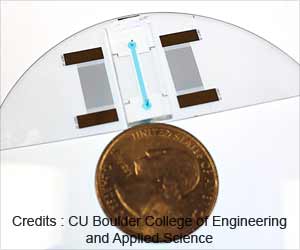Sickle cell disease causes red blood cells to distort into a crescent shape and block small blood vessels.

Individuals with sickle cell disease often develop anemia—a lack of healthy red blood cells—which can cause fatigue, shortness of breath, and even organ damage, because not enough oxygen reaches tissues in the body. Oxygen-carrying proteins in red blood cells, called hemoglobin, form large chains that alter the shape and increase the stiffness of the red blood cells, causing them to get stuck in blood vessels. For many years, scientists believed that these abnormal cells blocked small blood vessels called capillaries, until experiments later revealed that blockages occurred in downstream vessels.
To find out why sickle cells don't get stuck in capillaries, Ferrone and his team studied the flow of individual sickle cells through narrow plastic channels that resemble human capillaries in that they allow only one cell at a time to squeeze through them. They placed a single cell in the center of a channel and applied pressure to the trapped cell until it broke free. More pressure was needed to dislodge the cell when hemoglobin formed longer chains, highlighting the important role of hemoglobin abnormalities in occluding vessels. Overall, very little pressure was required to push sickle cells through the channels, which explains why they instead get stuck in downstream vessels.
"Our measurements provide the missing physical basis for vessel occlusion seen in sickle cell disease," Ferrone says. "Knowing where a problem arises always simplifies searching for its solution, so our findings could be used to develop more effective treatment strategies."
Source-Eurekalert











